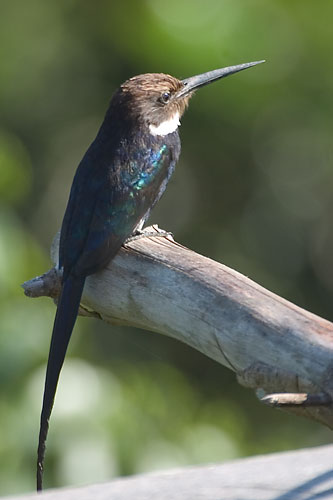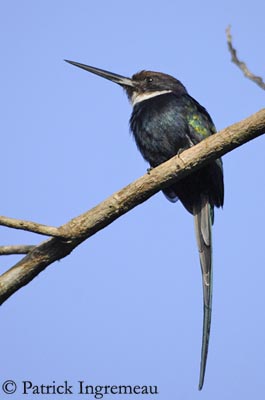
Galbula dea
TAXONOMY
Galbula dea Linnaeus, 1758.
OTHER COMMON NAMES
French: Jacamar а longue queue; German: Paradeisglanzvogel;
Spanish: Jacamar de Cola Larga.
PHYSICAL CHARACTERISTICS
12 in (30 cm) long; 2 in (51 cm) slender bill. Metallic bluish
black color on upper and lower body, contrasting white patch
on throat, long elegant tail.
DISTRIBUTION
Amazonian Brazil, the Guianas, Peru, Bolivia, Venezuela, and
Ecuador.
HABITAT
Forest and forest edge or upland woodland.
BEHAVIOR
Hunts alone, in pairs, or in groups of three, may join canopy
flocks.
FEEDING ECOLOGY AND DIET
Prefers butterflies and dragonflies. Perches on a branch, then
darts out to capture prey in mid-air.
REPRODUCTIVE BIOLOGY
Lays one to four white eggs in ground-hole nest cavity. Incubation
is 20–23 days. Chicks emerge from nest after 21–26
days, covered in white down. Both sexes incubate, and care for
chicks.
CONSERVATION STATUS
Not threatened.
SIGNIFICANCE TO HUMANS
None known.
Photo Gallery of - Paradise jacamar




 Animalia Life
Animalia Life